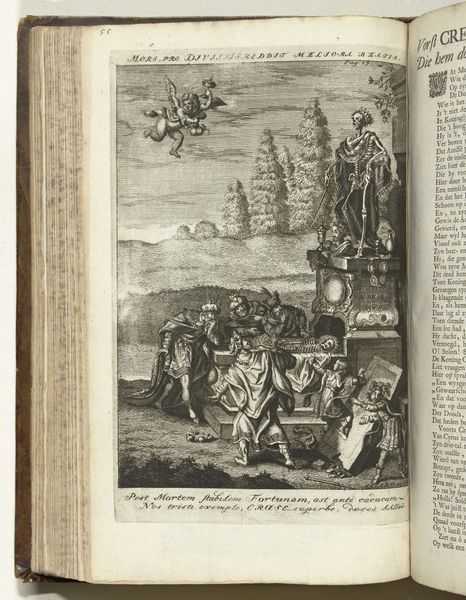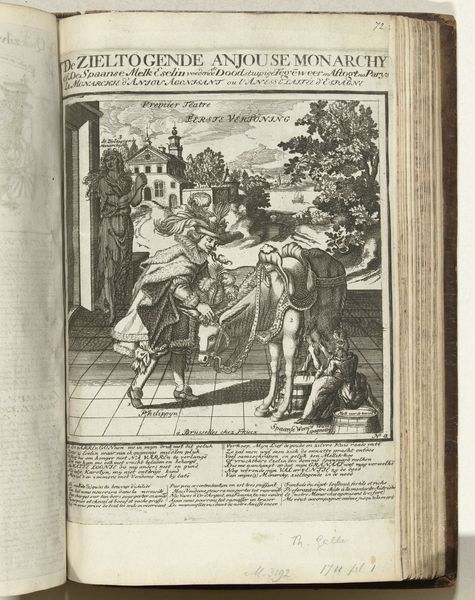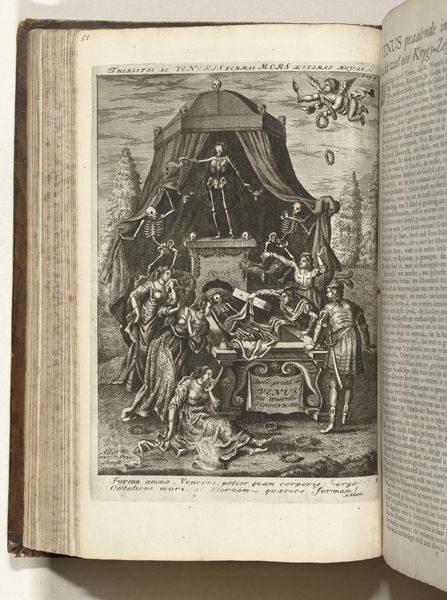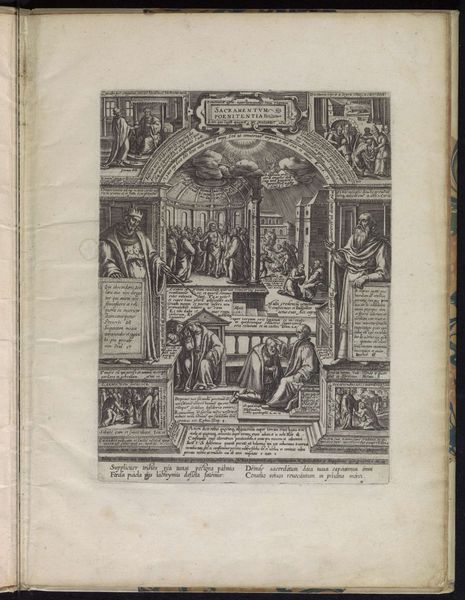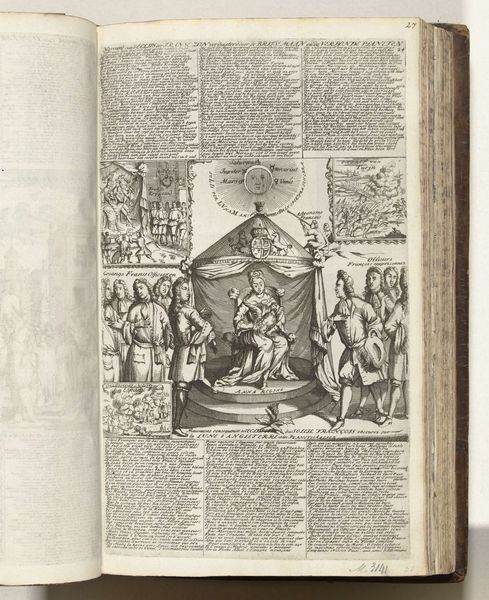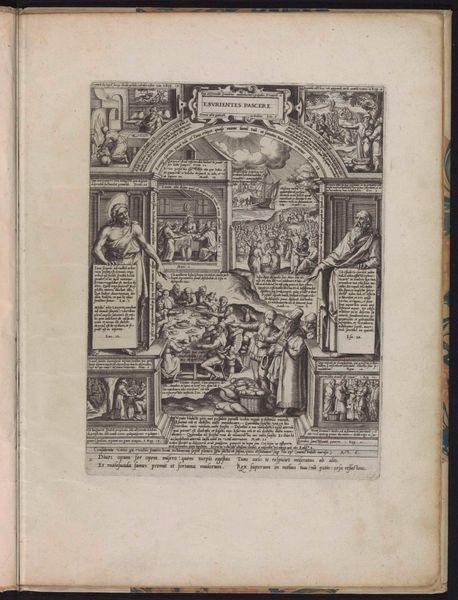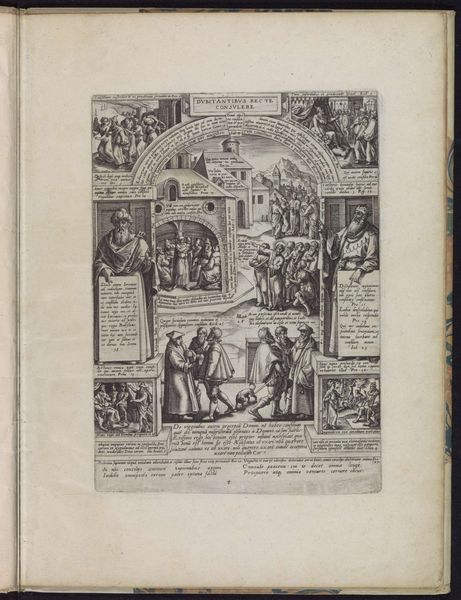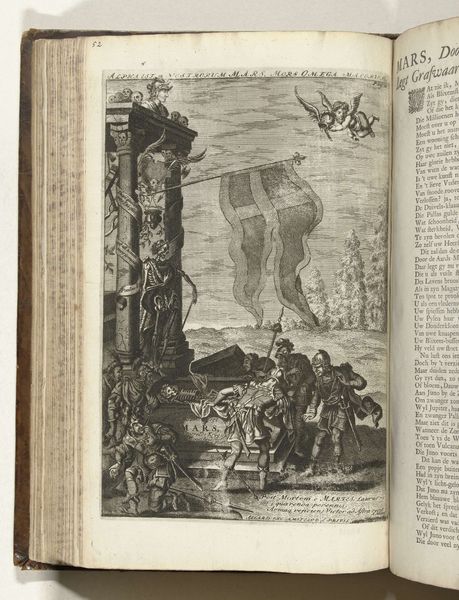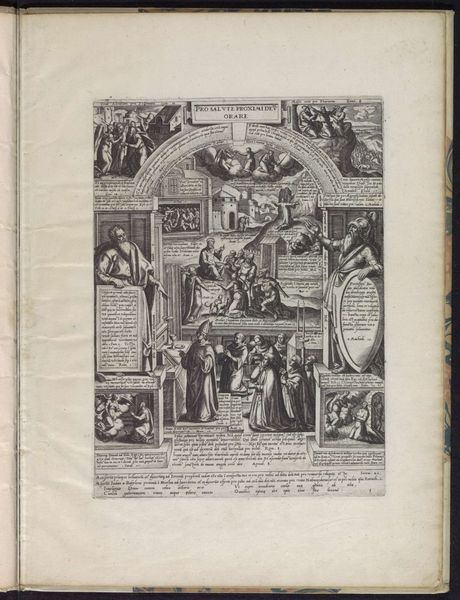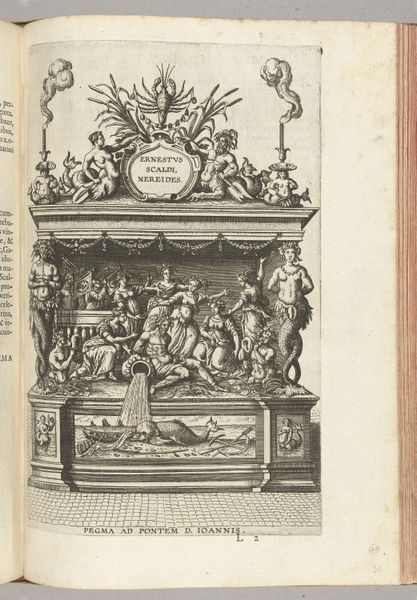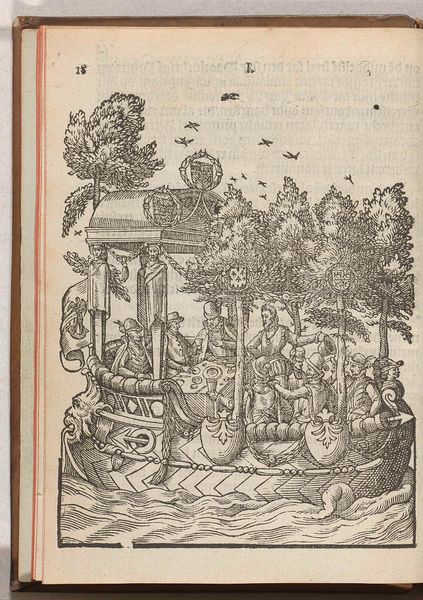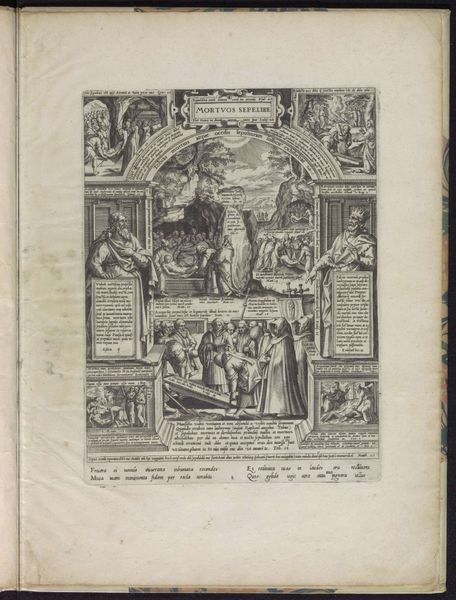
engraving
#
allegory
#
baroque
#
history-painting
#
engraving
Dimensions: height 315 mm, width 200 mm
Copyright: Rijks Museum: Open Domain
Editor: This is "The Opened Grave of Pallas," an engraving by Carel Allard, dating back to about 1707-1708. It has such a strong visual impact, with the skeletal figure lying over the tomb and that dramatically lit, tilting gravestone in the foreground. What catches your eye most in its composition? Curator: Formally, I’m drawn to the stark contrast between the meticulously detailed figures in the foreground and the more broadly rendered background architecture. Note the dynamic interplay of light and shadow, a baroque characteristic that enlivens the somber subject. It contributes to the work’s overall sense of dramatic tension, wouldn’t you agree? Editor: Definitely. The dark shadows really emphasize certain elements, but does that dramatic lighting do anything more to influence the eye in specific ways? Curator: Precisely! The lines of sight, established through the characters' gazes and gestures, create vectors that guide the viewer through the complex composition. See how your eyes bounce from the gravestone, past the pallbearers, to the architectural background that creates an implied plane, ultimately moving upward. Notice, too, how the formal obelisk, central to the frame, creates symmetry through the overall composition of the artwork, providing structure for what seems a highly chaotic scene. It produces an underlying formal tension by establishing compositional stability with allegorical instability. Editor: I hadn't noticed how the obelisk adds a sense of compositional balance, it’s all so cleverly done. Now I can truly appreciate Allard's manipulation of form to draw the viewer into this allegory. Thanks! Curator: Yes, a deeper dive into the formal aspects really gives the work greater dimension, and, arguably, enriches one's understanding of art.
Comments
No comments
Be the first to comment and join the conversation on the ultimate creative platform.
